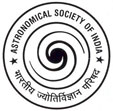The Jantar Mantar observatories have the potential to be used as a wonderful teaching laboratory for positional astronomy. We have this useful heritage, now extant in four cities : Delhi, Jaipur, Ujjain and Varanasi, within the country.
Without confining ourselves to just these cities, we could use the concept of these instruments and their pedagogical value towards teaching basic positional astronomy, anywhere in the world, through construction of models of these instruments.
Gathered here are resources firstly, to understand the usage of the Jantar Mantar observatory instruments for positional astronomy measurements and secondly various attempts by different outreach groups towards using models of these instruments for teaching positional astronomy.
While instruments in the Jaipur and Ujjain observatories have markings for measurement present in a reasonable condition, those in the Delhi and Varanasi observatories are in a state of disrepair. Restoration work is ongoing at the Delhi observatory.
Notwithstanding the state of disrepair of many of these instruments, they are yet in a condition to be used for Astronomy observations and teaching of Astronomy. This usage could proceed, in spite of the fact that most of the markings on the instruments are missing and the instrument surfaces have patchy layers.
In the absence of markings on the instruments, such usage would need to make measurements of the entire dimensions of the instruments, and then measure the position of Sun’s shadow or the reflection of a night time celestial object, in the instrument, for every data point collected.
The Jantar Mantar observatories were built by the astronomer king Sawai Jai Singh, early in the 18th century. The project of constructing observatories with gigantic masonary instruments for positional astronomy observations, was conceived by Jai Singh when he found that the observed positions of celestial objects did not coincide with theoretical predictions based on Siddhantic astronomical calculations. He intended that accurate observations with his instruments should be the starting point for preparing astronomical tables, and the basis for obtaining correct theoretical calculations of future celestial positions. He succeeded in this one specific endeavour of his – that of creating ephemeris content which could be used for calendrical purposes.
Jai Singh built the observatory with yet another purpose – that astronomical observations related to positions of celestial objects, should be something very easily possible, for the citizen on the street to do. He states this explicitly at the begining of the Zij-i-Muhammad Shahi, which was the manuscript containing the astronomical tables put together from all of the observations and astronomical endeavors of Jai Singh.
These instruments are like walking through three dimensional spherical trigonometry and they do bring basic astronomy alive to an interested beginner. It is very easy for anyone to appreciate the beauty and simplicity of celestial observations, using these instruments, once a little guidance is made available.
While the aesthetic presence of the observatory instruments is something that cannot be taken away as long as the basic structures are intact, their utility for the everyday visitor to bring basic astronomy alive, cannot be achieved until all the markings on the instruments are restored correctly and there is a continous presence of astronomy educators, students and amateur astronomers in the observatory.
In the pages linked here, the Jantar Mantar observatory instruments have been categorised in terms of their measurement possibilities
- Instruments for time measurement
- Instruments for local co-ordinate measurements
- Instruments for equatorial co-ordinate measurements
- Instruments for Ecliptic co-ordinate measurements
- Instruments for theoretical co-ordinate conversions and/or pedagogical usage.
This manner of division of the instruments would sometimes make segments of one and the same instrument appear under different categorisations. However, such a categorisation would make the most sense from a pedagogical point of view and is thus followed.
With each category of instruments, some of the ongoing analysis oriented projects being undertaken by different student groups, as well as possibilities of other projects in these and other directions are discussed.
